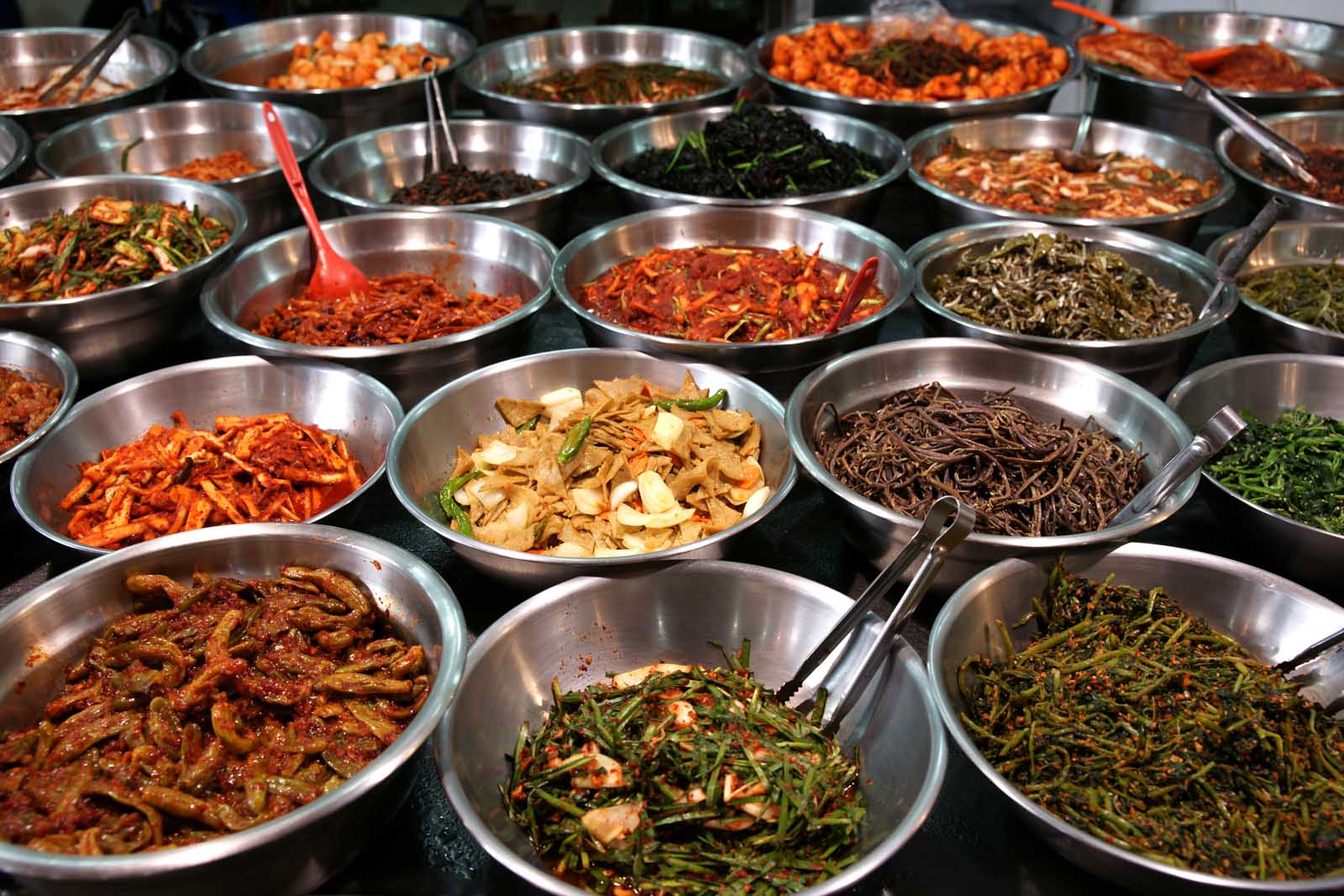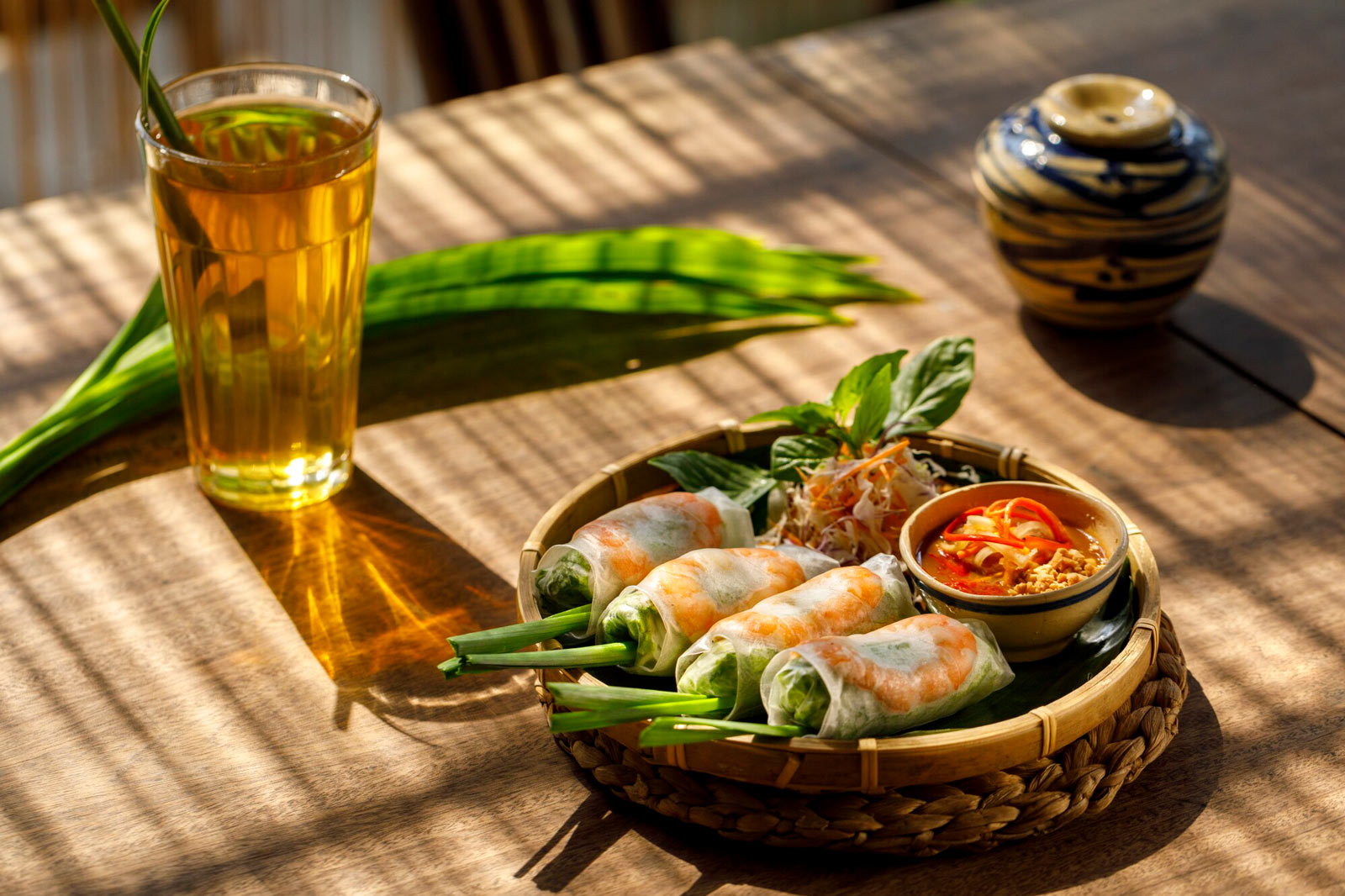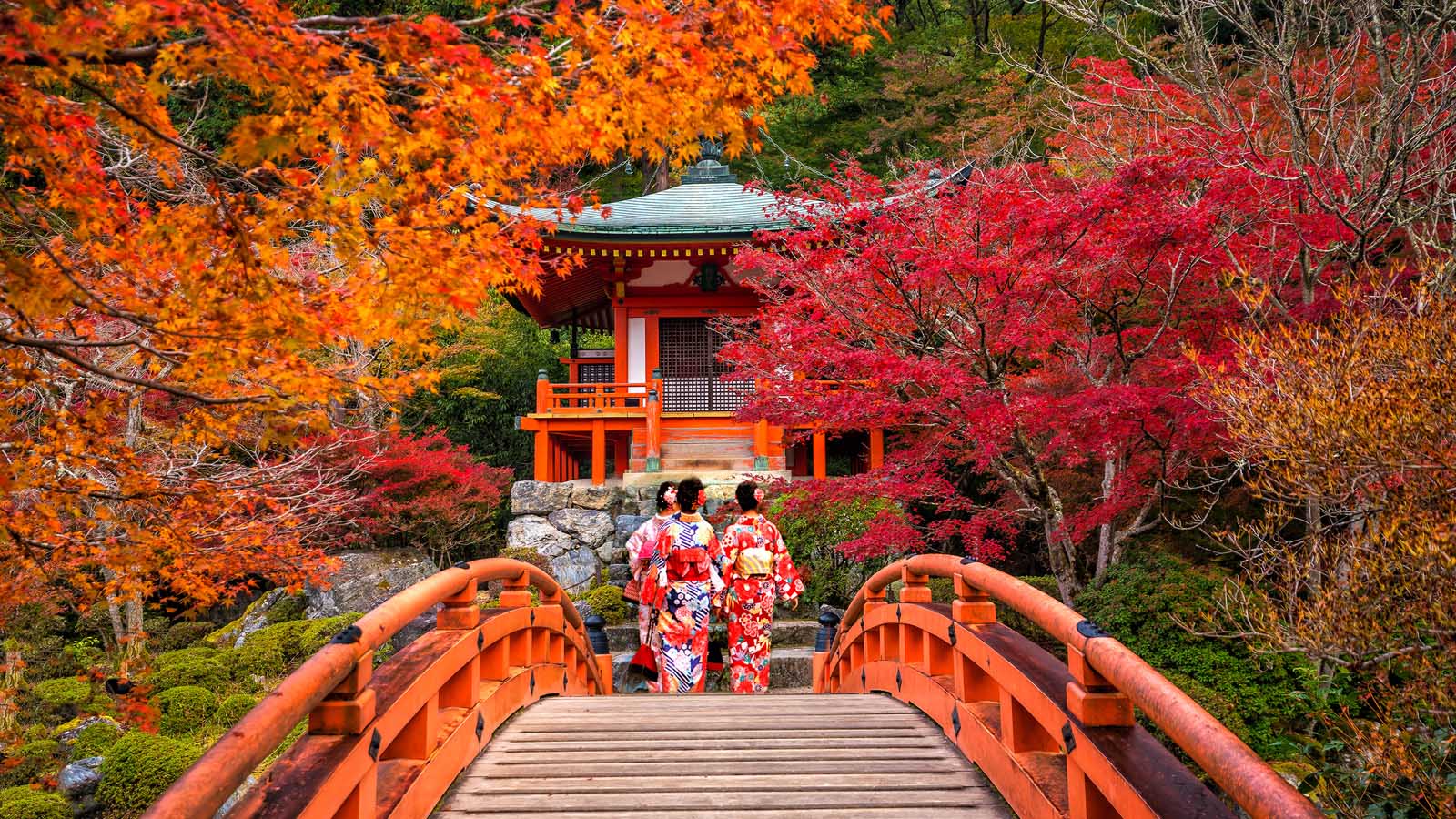[ad_1]
Once the capital city, Kyoto remains the cultural and spiritual heart of Japan. With so many things to do in Kyoto like witnessing the cherry blossoms in full bloom, enjoying tea ceremonies in traditional tea houses, and walking through Zen gardens it is one of the most visited and loved cities in Japan.
Known for its remarkable history (Kyoto has one of the world’s largest collections of UNESCO World Heritage Sites) and ancient traditions, Kyoto has managed to preserve its authenticity, and act as the window into Japan’s past.
Kyoto is a place that is full of temples, and by spending some time here and exploring each one you can really see why this is considered the capital of traditional Japanese culture.
Top Things to do in Kyoto, Japan
You can still see geisha in their traditional kimono and white makeup walking the streets and all of the temples and shrines are still occupied and maintained by monks that still carry on the old ways, wearing their flowing robes and performing ceremonies from long ago.

If you are looking for a destination that allows you to get away from the hustle and bustle of large cities like Tokyo and Osaka then this is the place for you. It can be overwhelming with so many things to do in Kyoto, so this guide should give a good idea of all the must-see things in Kyoto.
Kyoto is located in the Kansai area, about 3 hours away from the capital city of Tokyo by Shinkansen. The Kansai region is renowned for its local cuisine, which makes Kyoto a fantastic place for culture and food lovers alike. We suggest planning on at least 3 days in the city to really get the most bang for your buck.
1. Explore the trails of Fushimi Inari Shrine

Once an important pilgrimage walk, and one of the top things to do in Kyoto, Fushimi Inari Taisha is one of the most visited shrines in Japan. Famed for its thousands of vermilion Torii gates, Fushimi Inari Shrine is dedicated to the Shinto God of rice. The hike along the forest trails is fairly easy. You can choose to do the whole loop, which will take about 3 hours or just do the lower loop if you don’t have that much time.
The trail itself is very busy all year round, however, the clever traveler can avoid the crowds by hiking up the mountain just before sunset or early in the morning. Best to stop at the Yotsutsuji intersection for an amazing photographic opportunity over Kyoto.
Where is the The Fushimi Inari Taisha Shrine
The Fushimi Inari Taisha Shrine is located in southern Kyoto at the foot of Mount Inari. To reach it take the train to Fushimi Inari Station on the Keihan Main Line and the entrance is a 5-minute walk from there. Book this highly rated Fushimi Inari Shrine tour with a local guide. Journey into a secret bamboo forest, see the red tori gates and take in the views away from the crowds.
Pick up your 1 or 2 day hop-on-hop-off bus pass to explore the top attractions, temples and shrines in Kyoto at your own pace. Including UNESCO World Heritage sites such as Nijo Castle, Kinkakuji, Kiyomizu-Dera Temple and more.
2. Kinkakuji Temple

Located in northern Kyoto The Kinkakuji Temple is a Zen temple that is really worth seeing. Decorated in gold leaf (hence why they call it the golden pavilion), the temple sits on a calm lake surrounded by trees. It is one of the most photographed places in Kyoto and for good reason. Originally built as a retirement home for a famous shogun, he sanctioned it to become a temple after he died in 1408.
Strolling the grounds, it is easy to see why this would make a perfect retirement place. Like most places in Kyoto, we recommend visiting early in the morning to avoid the crowds and to enjoy the morning light that shimmers off of the calm waters and the golden temple itself.
3. Philosopher’s Walk

The Philosophers Walk is the perfect place to enjoy a peaceful yet beautiful stroll. This pedestrian walkway is located along the Biwa Canal that is lined with cherry trees. It also connects the Nanzen-ji and Ginkaku-ji (Silver Pavillion) temples. This walk is one of the top things to do in Kyoto especially if you are here when the cherry blossoms are in full bloom. There are some smaller temples as well as some cafes and restaurants along the path that are worth visiting.
This Kyoto Walking Tour lets you discover the magic of Kyoto through cultural experiences, temples and shrines including Tofukuji Temple, Zen garden, and Fushimi Inari Shrine plus a visit to the Geisha district.
4. Visit the Arashiyama bamboo grove

Walking through the Arashiyama bamboo grove is like stepping into an alien world. Tall green stalks dotted alongside a narrow path, make Arashiyama an alluring point of attraction in Kyoto. The bamboo grove in Arashiyama is perhaps the most beautiful natural spot in Kyoto, as when the wind blows, the bamboo stalks slowly rock, creating an elegant and dreamy dance.
The best time to visit Arashiyama is just before the sunrise, when the warm rays of the sun, slowly penetrate the silent forest. It is also when you will avoid most of the crowds and tour busses. This is just something you cannot miss when visiting Kyoto.
The Arashiyama bamboo grove is located in Western Kyoto and can be reached by taking the train from Kyoto station to Arashiyama station. Then it is just a 10-minute walk to the entrance of the paths, just follow the signs. It is also free to enter.
This highly rated bamboo forest tour take you on a rickshaw ride through Arashiyama forest with a personal guide. Imagine traveling by traditional means through one of Japan’s most iconic scenes.
5. Go Geisha Spotting in the Geisha District: Gion

Read about dressing up as a Geisha in Memoirs of a Male Geisha in Tokyo, Japan by NomadicBoys.
Kyoto remains a romantic vision of Japan, with Geishas being its most alluring subject. Gion, known as the entertainment quarters in Kyoto, is the best place to go Geisha spotting. These elusive performers are still very much admired and idolized, not just by the Japanese, but by the whole world.
There are several companies in Kyoto which organize Geisha shows. These usually include partaking in a tea ceremony, followed by a Geisha dance. Book this night walk Geisha Tour – one of the most popular walking tours in Kyoto. A 100-minute guided walk takes you through nighttime Gion to learn about Geisha traditions.
6. kiyomizu dera temple

Kiyomizu Dera Temple is a UNESCO World Heritage Site, located in eastern Kyoto and has to be one of Kyoto’s most famous attractions. Built in 778 this zen Buddhist temple has some of the best views across the city. The main hall was actually built without nails, which is pretty cool to see, and the rest of the complex is just as impressive.
The Otowa Waterfall has three streams of water each with a different benefit. One for longevity, one for academic success, and the other for success in their love life. Locals use cups attached to long poles to drink from one of them.
As with most of the extremely popular things to do in Kyoto, it is advised to get there early to avoid the busses and crowds. Luckily the Kiyomizu Dera Temple opens earlier than most (6 am) so that is a bit easier to do. It is easily accessible as it is a 10-minute bus ride from Kyoto station. Take bus 100 or 206. the entrance fee is 400 Yen.
7. Witness the Cherry Blossoms

Almost everyone has heard of the famous Cherry Blossom Festival (Sakura) that takes place each year in Kyoto. During this time the cherry blossoms around the city’s temples and shrines are in full bloom and it creates this fairytale-like atmosphere. Some of the top places to see the cherry blossoms are The Philosopher’s Path, the Yasaka Pagoda, and the Kodai-ji Temple which houses the weeping cherry blossom tree.
If you do choose to visit Kyoto when the cherry blossoms are in bloom just be aware that is insanely busy all around the city at this time and everything is more expensive. Cherry blossom season is in the spring (April is the main month) so make sure to book early.
8. Admire The City From Kyoto Tower

A lot of the popular things to do in Kyoto revolve around Japanese culture, Zen temples, and cherry trees, but there is a modern side to Kyoto as well. This is on full display at the highest structure in the city, Kyoto Tower.
Located in central Kyoto, the tower offers spectacular 360-degree views of the surrounding area as well as telescopes and touch screens that show the names of what you are looking at. It is strange to see such a structure in the middle of a city that is known for its temples and it has been a controversial subject for locals since it was built.
In our opinion, it is still worth making the trip up to get the full appreciation of the beauty of this city.
9. Attend a tea ceremony

The Japanese Tea Ceremony is a fascinating practice that dates back to the 15th century when a Zen Buddhist monk influenced the way such ceremony was performed. Although an old tradition that is said to have started around Uji, the practice of the tea ceremony is still very much taken seriously today.
Many study it in detail and are willing to share their knowledge with travelers, which can experience an authentic tea ceremony in one of the myriad tea houses located in Kyoto. Experience your own Japanese tea ceremony led by a tea master as you learn of the rules, history, and spirit role of tea in Japanese culture.
10. Nishiki Market
Nishiki Market should be on every food lover’s bucket list. A maze of narrow streets lined with food stalls, Nishiki Market has been nicknamed Kyoto’s kitchen.
This is the best place to try the bizarre Tako Tamago (small octopus on a stick with an egg inside its head), local pickles, and fresh eel.
11. Eat in Shijo Dori

No trip to Kyoto can be complete without spending a considerable amount of time devouring local delicacies. For the culinary enthusiast, Shijo Dori is the place to be, as this is a long street dotted with food shops and eateries.
Furthermore, it is on Shijo Dori that most tourists can indulge themselves in sampling traditional foods, including matcha goods, charcoal ice cream, fruity mochi, and plum tea.
12. Shrine and Temple hopping

Kyoto remains the spiritual soul of Japan, being home to over 2000 shrines and temples. With so many options, it’s difficult to imagine visiting all religious sites during a short visit to Kyoto. Yet there are several shrines and temples not to be missed, including Ginkaku-ji, and Ryan-ji.
Although few know it, one of Kyoto’s best-kept secrets is Otagi Nenbutsu-ji, a small Buddhist temple located way off the beaten path, around the Arashiyama district.
Book this Zen Meditation Tour where you’ll practice Zen meditation with a Buddhist monk, participate in a tea ceremony and wander through the bamboo grove. Plus many more cultural experiences. Details here.
13. Sleep in a Ryokan

To experience traditional Kyoto, sleeping in a Ryokan is an absolute must. Although relatively expensive, these Japanese inns usually include dinner and breakfast, top-notch service, and the use of the hot springs (onsen).
Ryokans vary in terms of facilities and budget, but the best ones will include all of the above. A friendly word of warning: the ryokan experience is so incredible, it becomes rather addictive. The Gion Fukuzumi Ryokan is a top-rated ryokan for travelers to Kyoto. See it on TripAdvisor. Search more Kyoto Ryokans here.
14. Take a day trip to Mount Hiei

Although Kyoto has so much to offer, the true zen can be pursued outside of the city and within its surrounding mountains. Mount Hiei is a fantastic option for a day out, being easily accessible and home to a few temples along the way.
To access the top of the mountain, there is a cable car (a recommended experience) or a mountain trail that leads to an old Buddhist monastery. For a great day out, best to take the cable car to the top, then descend on foot to enjoy some of the ancient Japanese forested trails.
15. Lose yourself in the Kyoto station

Perhaps the least expected recommended attraction, the Kyoto Station, is an amazing place to spend a day. With over 14 stories full of shops and eateries, this place has something for everyone. Start in the basement and shop in the local department store, which sells mouthwatering fresh food.
End the evening by eating either sushi in Musashi or tonkatsu in Katsukura. It is also a great spot to enjoy amazing views over the city at night.
16. Kyoto International Manga Museum

If you are looking for something a little out of the ordinary to do make sure to check out the Kyoto International Manga Museum. Even if you are not into manga comics you will be impressed by the 300,000 volumes of comics that are translated into many different languages. The museum is a fun stop if you have kids and is the perfect place to kill a few hours if the weather is bad.
17. Kyoto imperial Palace

The Kyoto Imperial Palace is a place not to be missed, especially if you are visiting in the spring or fall. This palace was used as the residence of different Emperors for 500 years until the capital moved to Tokyo in 1869. The walled compound has some incredible and expansive gardens which really come to life in the fall.
The building themselves are designed in the traditional Japanese style and make the perfect accent to the surrounding nature. This is a place you definitely want to stroll around for an hour or so. It is close to Nijo Castle and the Kyoto International Manga Museum as well as the Nashinoki Shrine.
Final Thoughts
Kyoto is the perfect place to enjoy traditional Japanese culture, get a glimpse into the history of Japan as well as take in the incredible architecture that has made this one of the most popular tourist destinations in the world. If you plan on visiting Kyoto you won’t be disappointed.
This post was originally written by Cory Varga and has been updated by The Planet D. Cory and G, are the happy British couple behind You Could Travel, a website geared towards inspiring others through information-packed articles that revolve around travel guides, recommendations, and tips. They specialize in soft adventure travel, off-the-beaten-path destinations, and culinary affairs. They motivate and encourage a nomadic lifestyle through storytelling and photographic essays. Follow them at: YouCouldTravel / Facebook / Instagram / Pinterest / Twitter
Plan Your Trip to Japan With These Resources
[ad_2]
Source link




